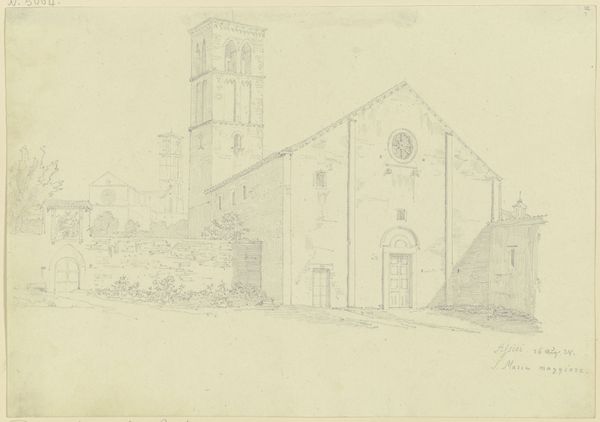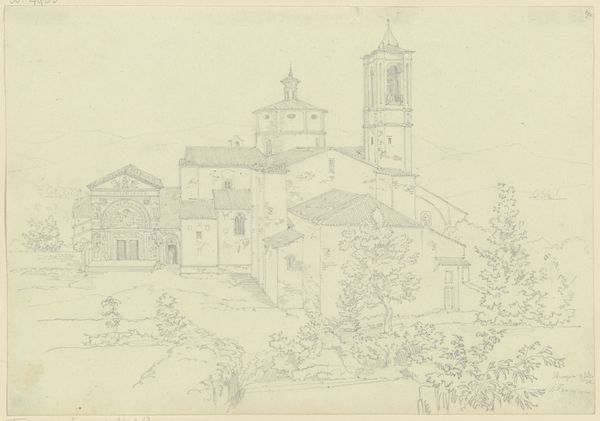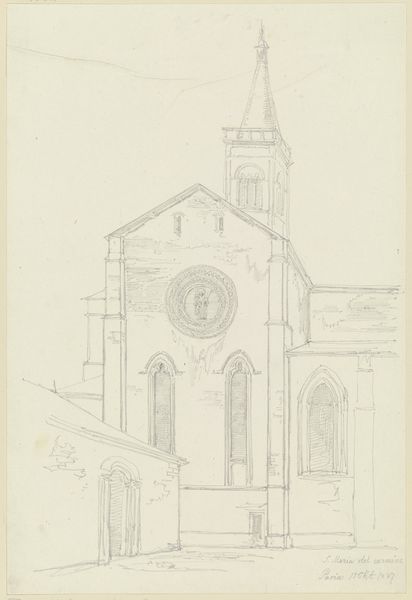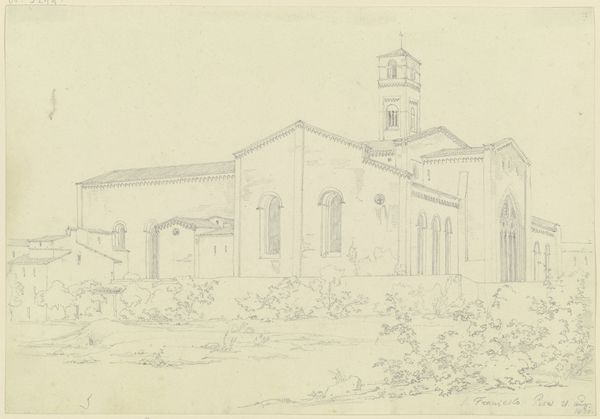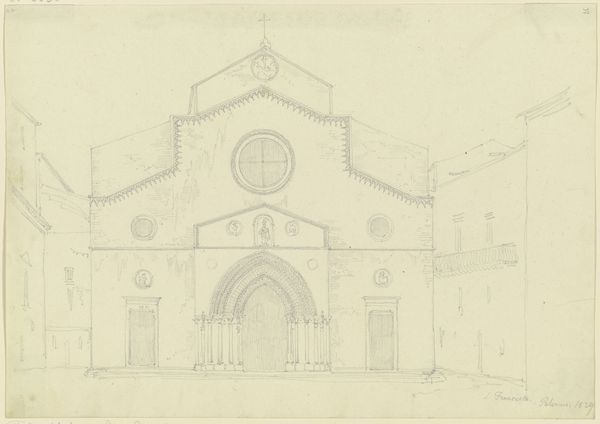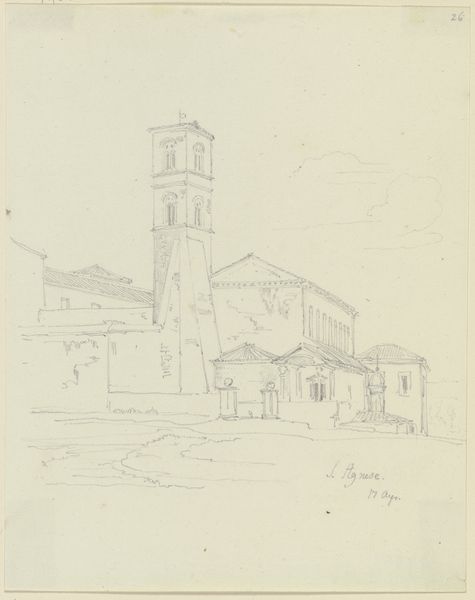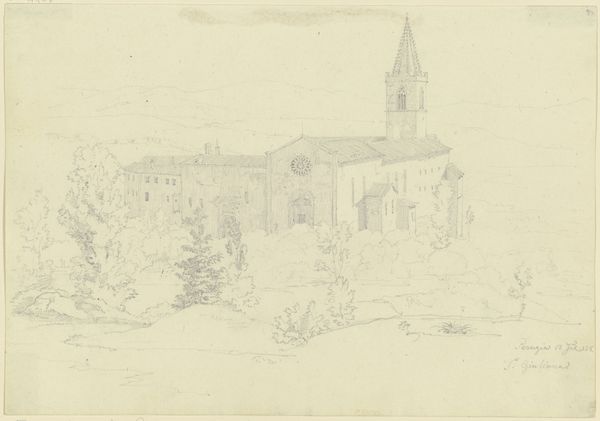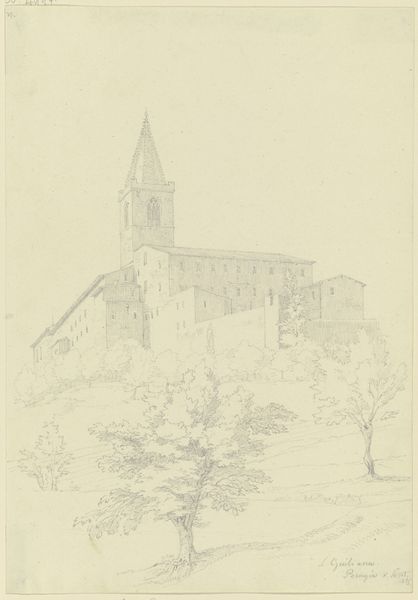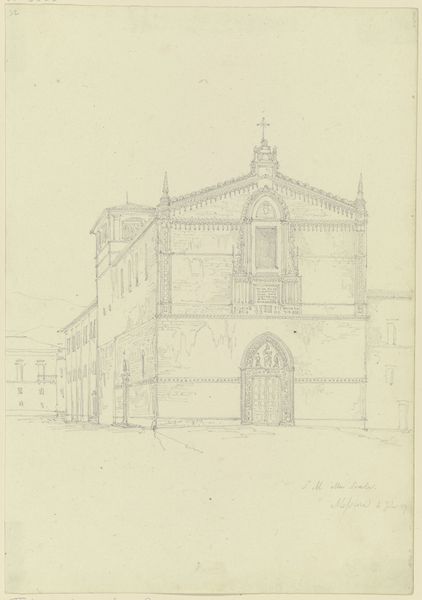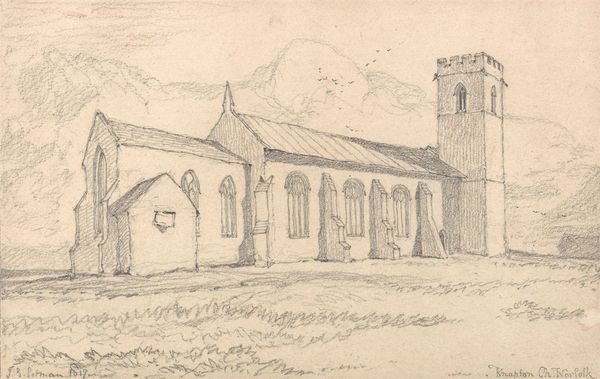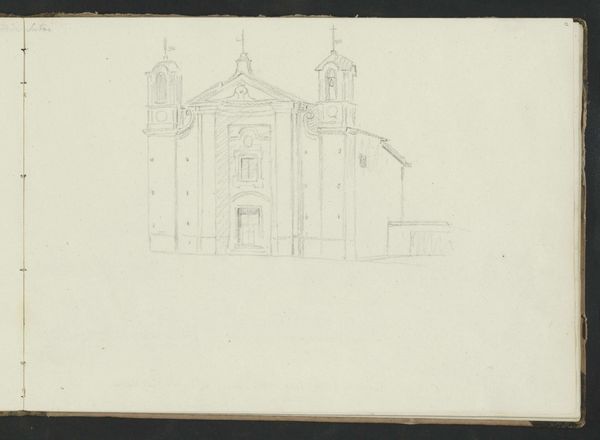
drawing, print, ink, architecture
#
drawing
# print
#
etching
#
romanesque
#
personal sketchbook
#
ink
#
architecture
Copyright: Public Domain
Curator: Here we have Heinrich Hübsch’s architectural study, "Die Kirche S. Giuliana bei Perugia," rendered in ink, likely a preparatory sketch for a later print. What's your initial take? Editor: Stark simplicity. The light etches the facade with such delicate insistence—almost fragile yet so grounded. There’s a sense of timeless observation that captivates me right away. Curator: The piece presents more than just an architectural record; it prompts us to examine how structures like churches symbolize authority and the ways in which faith and power are interwoven. I wonder how the inhabitants engaged with this specific religious center at the time, and who it represented and perhaps excluded. Editor: I am compelled by the visual rhythms – the round rosette window balancing the steeple’s spire above. Consider also the horizontal bands of stonework contrasting with the arched doorway below, offering an invitation or maybe asserting the unyielding principles behind it? It recalls other sacred spaces… perhaps Delphi, maybe? Curator: Perhaps, but unlike the classical associations we might find at Delphi, the sketch reminds me of ongoing debates around land ownership and church influence, the building standing perhaps as a site both sacred and contested depending on social positioning. Editor: Indeed, its clean lines do speak to formal religious power. I note also how the cross sits atop the tower like a crowning gesture – how much control would this site exert, I wonder. Is there protection here, or something else, something more restrictive? Curator: I see what you’re getting at. Looking at this through a postcolonial lens also reveals an assertion of cultural norms; the structure itself may carry impositions depending on the complex identities around the sacred place. Editor: Interesting, but still, let us appreciate the symbolic geometry here. These intentional strokes bring spiritual connotations immediately to mind, whether these impositions you cite have helped to shape these notions, too. Curator: Definitely, it offers an architectural statement of dominance but with undeniable complexities. Thanks to your insightful eye for imagery and the emotional registers it accesses, this etching invites much further interpretation of church architecture and societal identity. Editor: Agreed; I must thank you for revealing new contexts that are not at first visually apparent to someone viewing such a drawing. It opens up a greater narrative for us all to consider.
Comments
No comments
Be the first to comment and join the conversation on the ultimate creative platform.
